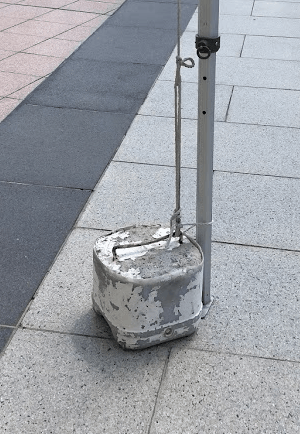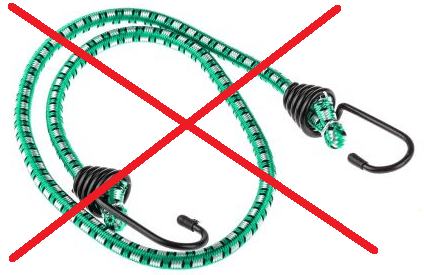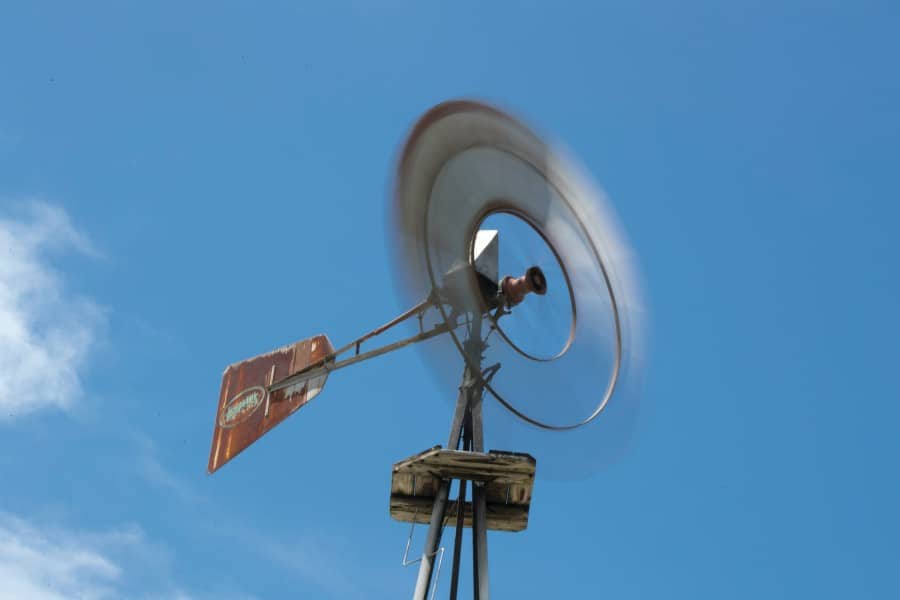You can take steps to prevent your day being spoiled by high winds before you have left the house: prior planning prevents poor performance! Check the wind forecast before you throw the canopy, gear and kids in the car. If it’s looking like it’s going to be much more than a gentle breeze (more than 8-12 mph or 12-19 kph) you should re-consider your canopy use, or at least ensure you have suitable anchoring gear. Now let’s launch into the hands on part of how to secure a canopy in high winds.
Site selection – choose the best foundation
A strong house can’t be built on a weak foundations. In this case your foundations will be the ground area where you are planning to setup. Look around and find a spot that is preferably flat and free from clutter. Consider whether you need to allow space around your canopy to setup rigging or guy-lines.
Setup your canopy well
Now to build the house properly. There are some key elements of a pop up canopy that should be put in place. These include ensuring that the telescopic legs have all been pulled out to the same length, to check that your corner sliders have been locked in place, and that the canopy top Velcro straps or clips are attached firmly to the side scissor beams. If you have adjustable roof vents ensure that they are open to prevent the wind pushing upward on the underside of the canopy top (instead of allowing it to vent out).
Staking and weighing down your canopy
This is a crucial step and will give you exponential anchoring power for your canopy and peace of mind during your event. Depending on your ground type you can use two broad categories of anchoring your canopy.
1. Weigh down the legs or frame with things like weight bags filled with things like sand, or heavy items like concrete blocks:


2. Hammer tent stakes into the ground with guy lines attached back to your canopy:

Obviously if you are pitching on soft ground like grass or sand, you can use any of the above techniques. However staking is not an option if you are on hard or concreted ground. For more information I have some articles about how to anchor your canopy at the beach, and how to anchor your canopy on concrete (or generally hard ground in general).
Some people recommend using generic bungee cords (stretchy elasticated cords) to tie down your canopy – I would be wary of these. Often these cords have plastic hook ends which I have heard stories of them ending up in people’s eyes. If you do use a stretchy type cord them make sure they are rated for the task (not just for general use), and they have closeable/lockable ends rather than just hooks.

Take it down or lower during inclement weather
No matter how well you pitch your canopy tent, when mother nature turns up the wind dial you may need to consider packing up to avoid your canopy becoming a kite. If you think the bad weather is temporary you can always lower the canopy down, or remove the canopy top, until the wind drops.
Summary of how to secure a canopy in high winds
Here is a checklist you can use to mentally check you are prepared for the wind.
- Preparation: ideally you want to setup on flat ground with minimal clutter (eg. rocks, ants nests) underneath. Keep an eye on the weather forecast, and pack your canopy anchoring equipment.
- Setup: ensure all parts of your canopy are properly setup and locked in place
- Anchoring: Use ground pegs or weight bags to secure your canopy
- Stay vigilant: If the wind picks up lower your canopy and consider if you should remove and fold up the canopy top.
When it all goes wrong….
This video really shows the power of mother nature (skip to around 11sec for the action)- I’m not sure a few weight bags would have made a difference to this huge tent!

